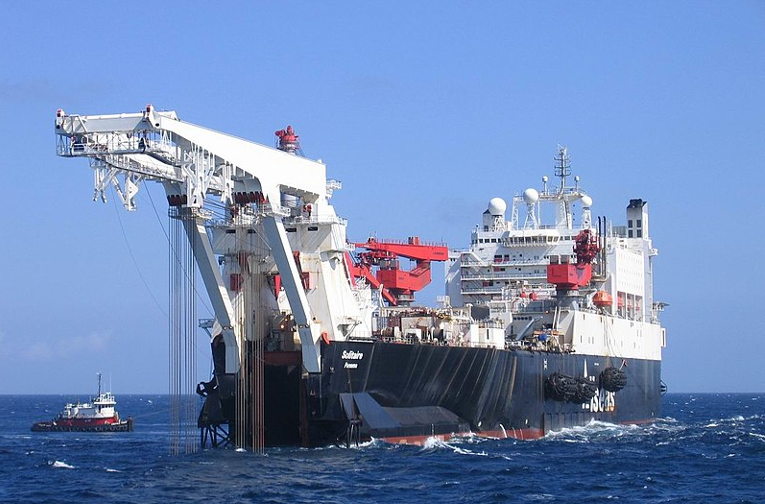The 2015 Norwegian television series “Occupied” has what will strike viewers today as an upside down premise. In the fictional series Russia invades Norway on behalf of the European Union to restore oil and gas production shut down by Norway’s new environmentally conscious government. Despite its odd premise, I found the series to be a gripping drama when I watched it a few years ago.
At that time the real Russian government was outraged by the suggestion that Russia would ever have any designs on Norwegian sovereignty. In a statement the Russian government said: “It is certainly regretful that in the year when the 70th anniversary of the victory in the Second World War is celebrated, the series’s creators decided to scare Norwegian viewers with a non-existing threat from the East in the worst Cold War traditions.”
Fast forward to today and there is plenty for Norwegians to worry about. As the largest supplier of natural gas to an energy-starved Europe, the Norwegians now consider themselves a prime target for Russian sabotage of the country’s oil and gas infrastructure as drones presumed to be Russian visit Norwegian offshore production platforms.
This comes in the wake of explosions which severed two large natural gas pipelines running from Russia to Germany called Nord Stream 1 and 2. Germany was being pressured by the United States to refuse Russian gas from the Nord Stream 2 pipeline long before the Russia-Ukraine conflict erupted. After the conflict started, the German government announced that it would not issue a permit for the pipeline to operate.
Though that decision did not affect deliveries through Nord Stream 1, problems quickly arose as each side accused the other of taking actions that reduced deliveries through Nord Stream 1. With both Nord Stream pipelines now apparently damaged beyond repair as Russia and NATO accuse each other of bombing the pipelines (see here and here), Germany will no longer be able to change its mind about Russian gas.
Enter the Norwegians who have long supplied natural gas to Europe. The small Norwegian population uses comparatively little of the oil and gas the country produces. So, most of its production is exported and most of that goes to Europe, particularly natural gas. In 2021 Norway provided 23 percent of the gas supply of the European Union and the United Kingdom combined. That percentage is now higher as Norway boosted production in the wake of the decline of Russian gas exports to Europe. And, of course, as Russia’s percentage of European consumption declined, Norway’s shot up, although we won’t know exactly how much until recent deliveries are compiled.
But Norwegian boosts in production cannot make up for the loss of such a large amount of gas from Russia in such a short time. Russian supplies previously provided 40 percent of EU consumption according the International Energy Agency. So, Europe faces a difficult winter without access to Russian gas except for that which is still being imported through southern Europe via the Turk Stream pipeline.
Now that Russia has lost almost all its leverage against Europe with regard to natural gas supplies, Europe is bracing for what it believes will be a war against its infrastructure to further cripple the continent and force it and Ukraine—which is now almost wholly dependent on NATO countries for weapons and economic support—to the bargaining table to accept terms favorable to Russia.
An initial Russian salvo in the infrastructure war inside NATO may have been the sabotage of communications cables critical to the operation of German trains in October which widely disrupted train travel around the country. Recently, drones of unknown origin were spotted buzzing offshore production platforms along the Norwegian coast. Airports, an oil refinery and a gas terminal were closed in response. Police arrested seven Russian nationals transporting or flying drones over Norwegian territory. One researcher thinks that the Russians are announcing that the Russian military can get to Norwegian infrastructure any time it wants. The lights on some drones were on and this may mean that the Russians wanted the drones to be spotted, the researcher said.
In Ukraine meanwhile, Russia is demonstrating what destroying infrastructure can do. By taking out key electrical infrastructure and water systems, the Russian military has denied much of Ukraine electricity and drinking water. Without electricity Ukrainians not only lose the ability to light their homes and businesses, but also the ability to pump motor fuel, start natural gas furnaces and stoves electrically, and pump water and sewage.
If the Russian military continues to succeed at destroying such infrastructure, this will likely create a vast humanitarian and refugee crisis as Ukrainians unable to get sufficient water or heat are forced to leave the country just to survive through the winter.
Right now the Ukrainian military is unable to reach far inside Russia to destroy its infrastructure in retaliation. And, of course, if NATO were to provide such a capability to Ukraine or join the war and conduct such strikes itself, the Russian government has said it would not rule out nuclear retaliation.
With the Russian military stuck in a conflict that both Ukraine and NATO say will not end until Russian soldiers retreat back behind the pre-conflict borders, the Russian war on infrastructure seems designed to create such a dangerous and horrific situation that all sides will seek a settlement as fears of nuclear war rise.
My personal view is that Russia has consistently underestimated the resolve of Ukraine and NATO just as Ukraine and NATO have underestimated the resolve of Russia. That suggests further escalation and an increased likelihood of a miscalculation leading to a nuclear exchange.
Photo: Allseas’ Solitaire, in 2017 the second largest pipelaying vessel in the world. Photo is from PR Allseas via Wikimedia Commons Commons https://commons.wikimedia.org/wiki/File:Allseas%27_Solitaire,_pijplegschip.jpg






